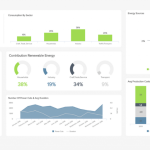Whether you have your own brand in mind or just a topic you’re passionate about, starting your own personal blog is a great way to share your knowledge with the world. Figuring out how to get set up and launched can be tough, though. What do you write about? What should your website look like? What should you title it? All these questions (and then some) are perfectly normal to be rattling around your head before you get started.
In this blog, we’ll tackle the big questions you have by going through the process of starting a personal blog. Let’s dive in!
1.) Find Your Niche
The first step to starting your blog is to figure out what you want to blog about. What’s the one thing you’re an expert on or super passionate about? This topic or industry will be your niche.
Sometimes it can be tough to figure out exactly where your interest falls, so you might need to do a little research. Look at some blogs that are similar to what you want to create and try to find the common theme in them. They’ll probably use keywords throughout their site to indicate their niche area, so keep an eye out for those.
Once you find your niche and have your overarching topic in mind, you can move on to the next step: setting up your website!
2.) Set Up Your Website
Many people think this means just grabbing a WordPress template and designing something they like. However, setting up your blog website is much more than that. You need to choose your platform, secure your domain and set up hosting before you ever make it onto your new web page.
First, you need to choose your platform. There are a handful of web builders out there, including WordPress, Squarespace and Wix. Each offers a unique host of capabilities and functionalities. You’ll need to compare their features to decide which has the right mix for you and will best support your blog.
Next, you need to choose and secure your domain name. Many web builders will help you search for and purchase this, so the process is pretty simple. Try to choose a domain name as close to the name of your blog as possible. This makes it easier for people to find and remember your URL. Some domain names are free, but many with more recognizable URLs will cost you some money.
Last, you need to set up your domain hosting. Basically, this is your contract to rent space on a web server so your website can exist on the internet. There are lots of options greatly ranging in price, but for a blog, you typically only need the entry-level package. This is another expense of having a blog, so be prepared for a price tag on this too.
3.) Create Content
For most bloggers, this is the fun part. With your website set up, you can start designing and creating content for your pages. There are three key areas of a website you need to have:
- Home page
- About Me
- Blog
These three areas will help people navigate your site with ease. Additionally, if you can break up your blogs into distinct topic clusters, it will help people find what they’re looking for. Remember to create dynamic content too, not just blogs. Add videos, graphics, photos and anything else you can think of to make your content more engaging.
Finally, if you’re promoting or selling a product on your blog, include some video testimonials on your product pages. This helps to show other readers that your site and product are legitimate. It builds trust in your brand and will keep people coming back for more.
This is the basic process of setting up your own personal blog. So if you have something you’re passionate about, go out and start planning your brand today! It’s easy with these three steps.







